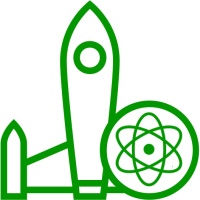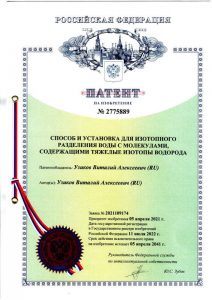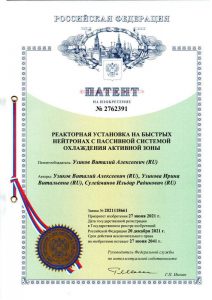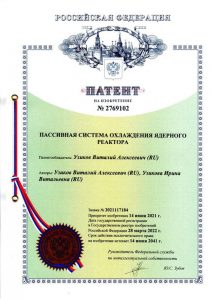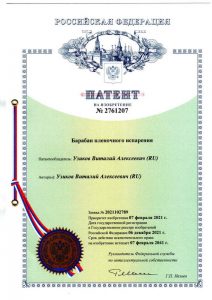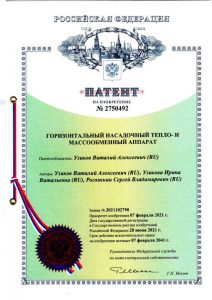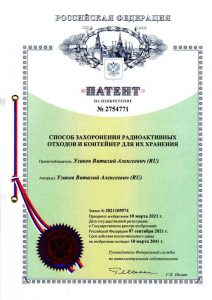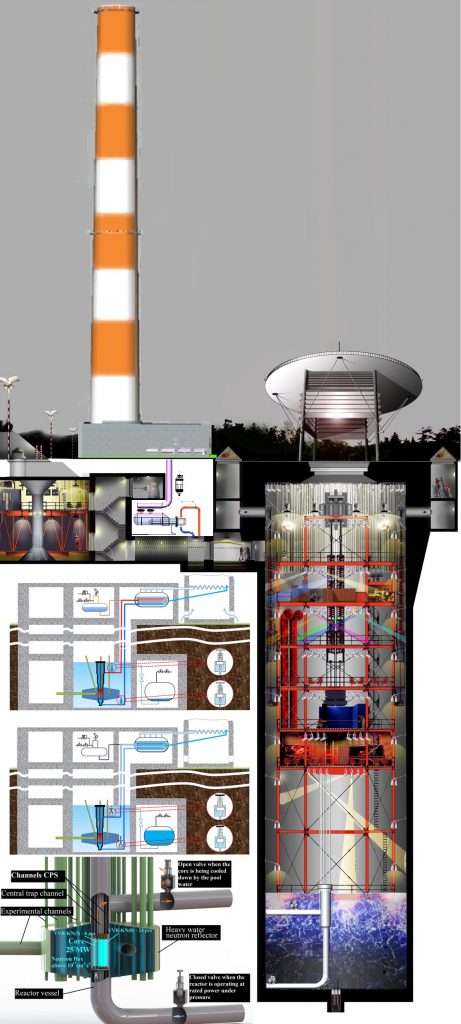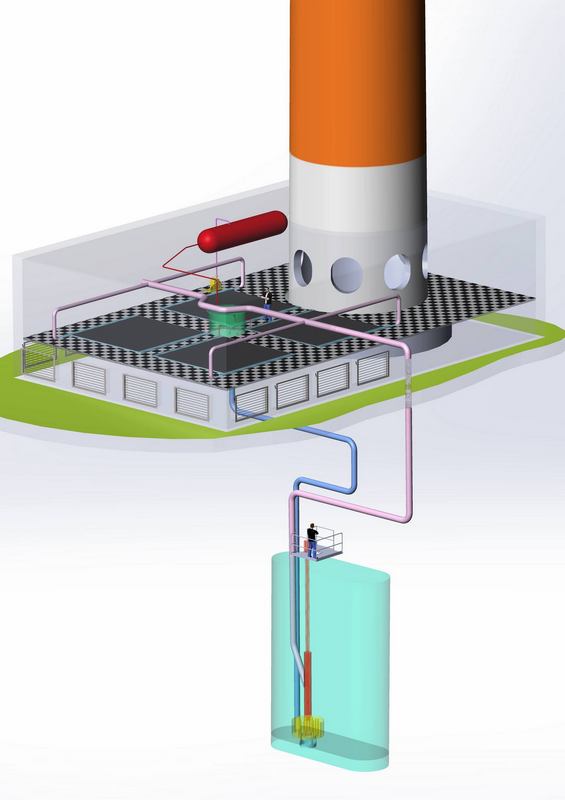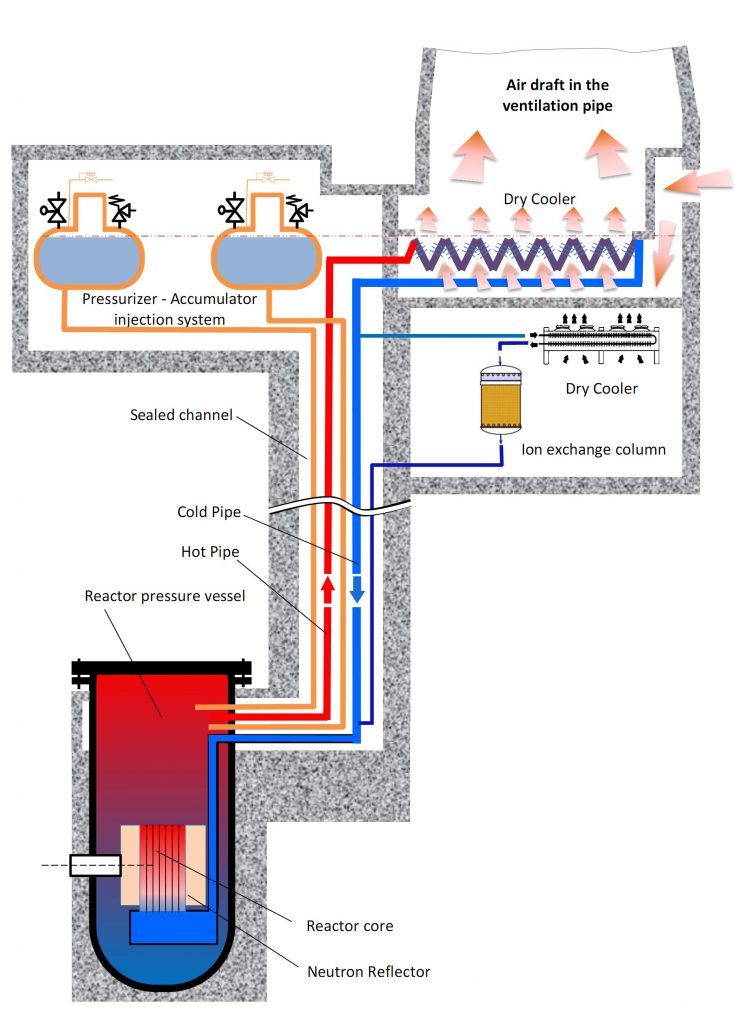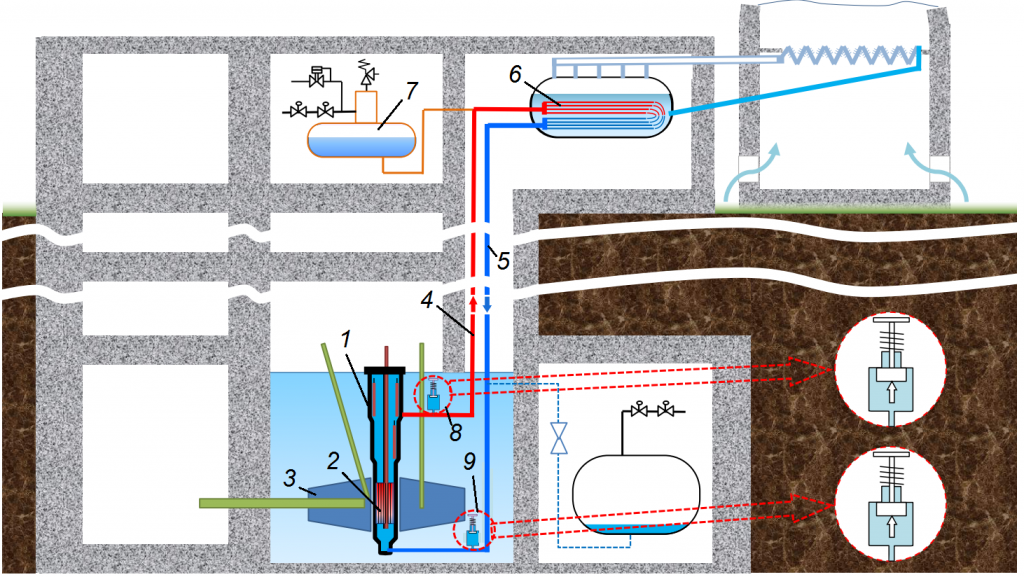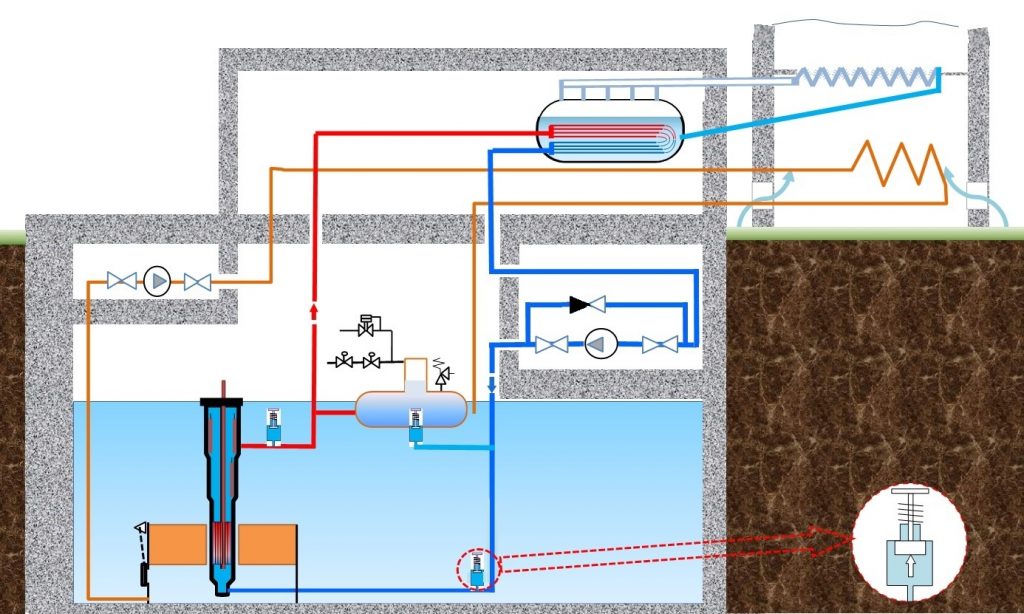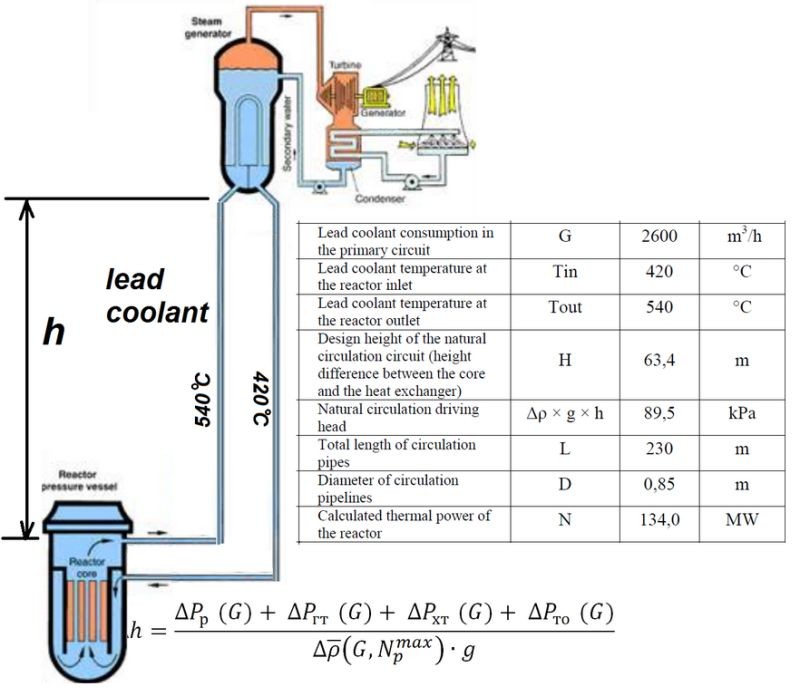Nuclear Reactors
Reflections on research reactors
Размышления об исследовательских реакторах
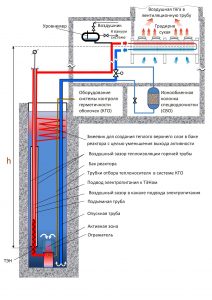
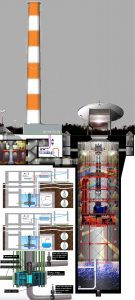
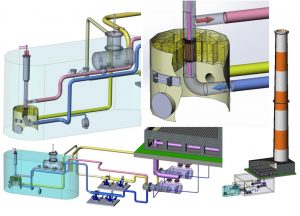
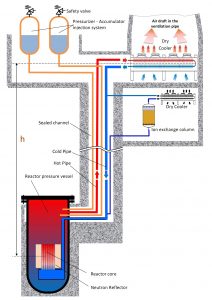
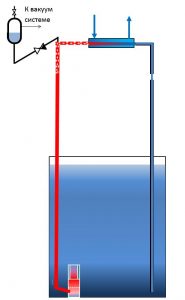
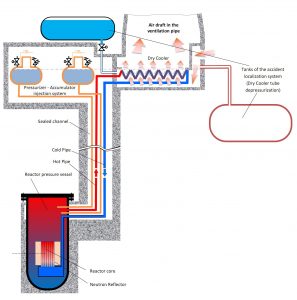
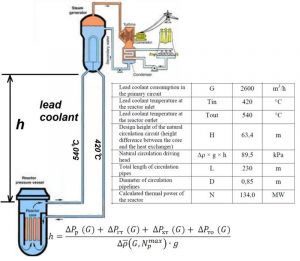

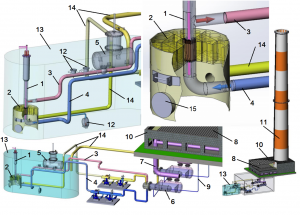
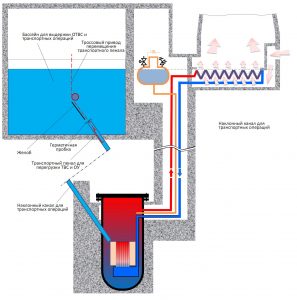
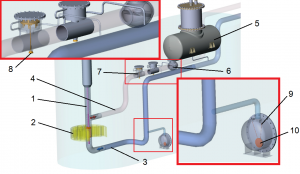
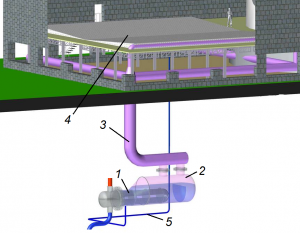
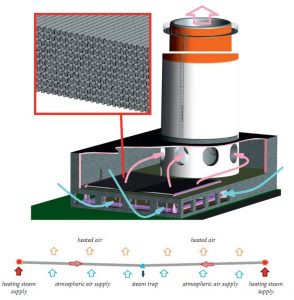
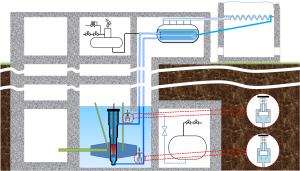
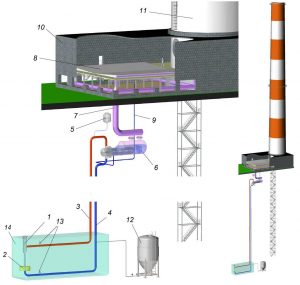

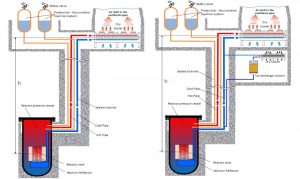
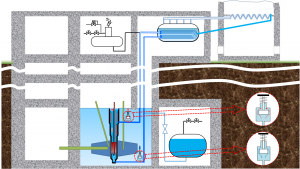
The essence of the considered concepts of RR core cooling systems is to increase the reliability of the circulation of the coolant core cooling, based on the guaranteed reliability of the natural circulation mechanism of the coolant
A few words about research reactors...
The topic of research reactors is difficult to attribute to «hackneyed», since most people have little idea of how even an ordinary power reactor works, and what can we say about awareness of the diverse research reactors. Due to the increased attention to the risks of nuclear incidents, further reflections concern, first of all, consideration of the possibilities for increasing the efficiency of research reactors while increasing their safety in case of emergencies. And basically the discussion concerns pressurized water reactors, which make up the lion’s share of the total.
There are currently about 240 research reactors (RRs) operating worldwide, and about 360 more have already been shut down and decommissioned. One of the reasons for the tendency to reduce the number of operating nuclear research reactors (RNR) in the world, which has manifested itself in recent decades, was not only serious accidents at nuclear power plants, but also the increased requirements for the technical level of safety of reactor installations and the qualifications of personnel associated with incidents.
However, in recent years, interest in the creation of new research reactors has begun to grow, which is associated with the development of nuclear technology and the desire of developing countries to have their own National Centers for Nuclear Research.
The need for safe, simple and scientific research is aimed at finding optimal and effective design solutions, a wide range of research is required in the following areas:
— nuclear physics,
— solid state physicist,
— radiation materials science,
— neutron activation analysis of substances,
— neutron radiography of various organs,
— radiation doping of silicon,
— production of isotopes for industrial purposes, etc.
IR uses both training facilities and sources of neutrons for the treatment of neutron therapy.

One of the most important systems of research nuclear research reactors, which affect its neutronic characteristics, safety and cost, are systems that ensure reliable heat removal from the core both in normal operation and in possible emergency situations. With the increase in safety requirements for nuclear installations after serious accidents at nuclear power plants, the complexity and branching of both safety systems and normal operation systems has significantly increased. This has led to a sharp increase in the number of considered possible failures of elements leading to emergency situations and an increase in the complexity of the analysis carried out to justify the safety of such installations.
The creation of simple, safe and reliable research reactor facilities with good performance depends to a large extent on the optimization of heat removal systems. The design of such installations should be carried out taking into account all adverse natural and man-made factors of vulnerability (seismicity, lack of reliable power supply systems, etc.), and it is also necessary to take into account the possible insufficient qualifications of personnel, causing possible errors in the management of reactor installations.
Also an important factor in the competitiveness of the project is the cost of the reactor plant and the operating costs for its maintenance and scheduled preventive maintenance.
On the other hand, after severe nuclear accidents, the safety issues of newly constructed nuclear reactor facilities for research and production of isotopes have become particularly important. The combination of the accumulated experience in the creation and operation of missile silos with new concepts for ensuring the safety of research reactor facilities will significantly expand the possibilities of using reactor technologies to solve scientific and applied problems. At the same time, a number of acute problems are removed, both with the construction of the reactor plant and its dismantling after decommissioning. Moreover, it should be taken into account that the cost of decommissioning a reactor plant and its dismantling is significantly higher than the cost of building this plant.
The proposed concept of silo-type reactor plants makes it possible to comprehensively solve the problems of safety, physical protection and decommissioning at minimized total costs.
The proposed innovative concept of a research reactor facility is based on safety enhancement due to the utmost simplification of the design of systems for removing heat from the core and using only passive systems in them when organizing the circulation of the coolant in all cooling circuits.
The passivity of cooling systems is based on the natural circulation of the coolant, the driving force in which is gravity and the difference in densities in the upstream and downstream sections. The intensity of the natural circulation of the coolant, other things being equal, is proportional to the height of the circulation loop, so the design of the cooling systems of the proposed reactor facility imposes certain requirements on the altitude parameters of the primary circuit and the exhaust pipe. However, it should be noted that the intermediate circuit heat transfer mechanism, based on the heat pipe principle, does not require a large circulation circuit height to transfer a large thermal power.
To ensure that the requirements for the height of the natural circulation circuit of water in the primary circuit and air in the circuit of heat transfer to the final heat sink can be met, for example, experience in creating high-tech engineering structures — missile silos designed for strategic ICBMs, as well as experience in creating large chimneys.
The principal feature of the presented passive heat removal system is the absence of active elements in the cooling circuits (for example, circulation pumps, shut-off and control valves, etc.), failures of which or incorrect actions of personnel in their management can affect safety.
An important element of the radiation safety of such a reactor plant is the presence of an intermediate circuit with a non-radioactive coolant, made according to the principle of operation of a heat pipe (thermosyphon). This design excludes the release of radioactive coolant into the environment in case of any depressurization of the cooling circuits. The proposed design of the core cooling circuits includes only vessels, pipelines and heat exchangers that do not interfere with the natural circulation of the coolant in any mode. The absence of elements with mechanical moving parts can significantly reduce the likelihood of equipment failures and increase the reliability of the cooling system while reducing its cost.
Guided tour of the missile silo in Ukraine
The independence of the operation of the cooling system from the power supply and the self-regulation of the coolant flow rate depending on the power of the reactor ensures the convenience of controlling the reactor and extends the operating modes without complicating the control systems.
The image of the nuclear industry, significantly spoiled by the catastrophes at Chernobyl and Fukushima, makes society take a special attitude to the possible potential consequences of accidents at nuclear research facilities (NRFs), although even with the most unfavorable development of accidents, their negative impact on the environment is incomparably less than from -for the catastrophes that occurred in Chernobyl and Fukushima.
The lack of a systematic approach to the analysis and solution of safety problems in the development of new and modernization of existing nuclear facilities can lead to increased risks and a corresponding decrease in reliability in the operation of nuclear installations.
In accordance with international standards, when developing new research reactors, it is necessary to focus on the safety requirements for research reactors, conceptual provisions and design principles for advanced research reactors (RR) for research centers, set out in the document:
Taking this document as a basis for the analysis, some conceptual designs of RR using the natural circulation of the coolant are further considered.
OPAL Research Reactor at Lucas Heights Nuclear Center

Pool Research Reactors
The device of pool nuclear reactors seems extremely simple and even primitive — the active zone is simply immersed in a tank of water. During the operation of such a reactor at power, it is only necessary to maintain the temperature of the water in the reactor tank no higher than a certain level.
The Soviet Union also created many pool research reactors, both with natural convection through the core (for example, IR-100 in Sevastopol with a capacity of 0.2 MW) and with forced circulation (for example, RBT-6 and RBT-10 at NIIAR, power of 6 and 10 MW, respectively).
The main advantage of the scheme with natural convection through the core is its simplicity and positive feedback between the coolant flow through the core and the reactor power. However, at certain parameters of the circulation circuit in the reactor tank and thermal power, the circulation flow becomes unstable, which is associated with the complex nature of the flow of coolant flows in a large space of the reactor tank. In addition, the limited flow rate of natural circulation with a single-phase coolant does not allow one to get out of the laminar flow regime, which significantly limits heat transfer from fuel elements and leads to a relatively high temperature on their surface. The fuel element claddings of most pool reactors are made of aluminum alloys, and if the fuel element manufacturer under operating conditions requires that surface boiling on their surface be prevented, this limits the allowable power of the fuel assembly and the reactor.
Boiling water under reduced pressure
hot air convection in the chimney
The disadvantages of the scheme with natural convection through the core include the complexity or impossibility of determining the thermal power of the reactor from a known flow rate and heating in the core due to the large difference in coolant flow rates and temperatures at the outlet of various fuel assemblies. The tightness control of the cladding of various fuel assemblies by sampling the heated coolant at the exit from them is also practically impossible. Another significant disadvantage of such a scheme is the removal of radioactive gases from the water surface in the reactor tank and the deterioration of the radiation situation in the reactor room.
Convection in liquid: - in a flask; - in a U-tube
Boiling water under reduced pressure
The systems of passive removal of the residual heat of nuclear reactors due to the natural convection of the coolant are widely known, which makes it possible to ensure the reliability and safety of nuclear installations when they are cooled down even in difficult situations, for example, with a complete loss of power supply. So why not use this principle as a normal operation system for small research reactors that belong to the so-called 3rd group in terms of potential hazard and do not require forced emergency core cooling systems?
And such schemes of natural circulation (NC) with the lifting movement of the coolant in the core in the normal operation mode are indeed used even in power reactors, for example, such as VK-50, however, the thermal power in such installations is determined by the coolant flow rate and temperature difference (or change steam content) in the primary circuit is very difficult. In addition, if we are talking about low-power research pool reactors, the problem of on-line control of thermal power in them according to the thermophysical parameters of the primary circuit with the NC is even more acute, since the heating of the tank (pool) water is rather slow, so the heat removal parameters in the secondary circuit are often not correspond to the current thermal power of the research reactor itself.
Without going into details of the description of various purposes and directions for the use of low-power research reactors, as well as omitting the description of the neutron-physical characteristics of the cores, we will consider only one side — the organization of passive heat removal during normal operation of the reactor facility.
An important advantage of this group of reactor plants is that it is possible for them to reduce the scope of safety requirements, but only taking into account their self-protection properties and on the basis of specific safety justifications submitted by their owners for independent examination.
The passive principle of operation of systems is one of the key conditions for high reliability and safety of operation. There is nothing that could disable or spoil the mechanism of gravity, so the operation of systems on this principle is more than reliable. One of the applications of gravity is natural circulation systems built on the difference in hydrostatic head in the circulation circuit due to the different temperature and, accordingly, the density of the coolant.
Pressurized Research Reactors With Natural Coolant Circulation
This section presents the results of an analysis of a universal core cooling system for research reactors based on the passive principle of natural convection. A three-dimensional model, technological and design schemes of the reactor installation are given, and examples of numerical evaluation of transients during the operation of the cooling circuit in normal and emergency modes are given to substantiate the possibility of using such a cooling system in research reactors of small and medium power. The principal feature of the passive system that is presented is the absence in the cooling circuit of not only active elements, such as circulation pumps and shut-off and control valves, but also passive elements with moving parts, such as a check valve. The cooling circuit includes only vessels, piping and heat exchanger. The absence of elements with mechanical moving parts can significantly reduce the likelihood of equipment failures and improve the reliability of the cooling system while reducing its cost. The versatility of the proposed system allows it to be used for a wide range of research reactor plants of various capacities being developed, designed to carry out programs in various areas of research and applied work related to nuclear technologies.





This section presents the results of the analysis of a universal system for cooling of the research reactors core. The cooling system based on the passive principle of natural convection of the coolant. This cooling system develops the concept of a reactor facility presented in the previous section. This Chapter presents à three-dimensional model, technological and design diagrams of a reactor unit. The examples of the numerical assessment of transients during operation in normal and accident modes are shown to substantiate the possibility of using such system in research reactors of medium and high power, providing a neutron flux of more than 1 × 10^15 cm^-2/s.
A fundamental feature of the presented passive heat removal system is the absence of active elements in the cooling circuits, such as circulation pumps, shut-off and control valves, as well as the presence of an intermediate circuit with a non-radioactive coolant, made according to the principle of operation of a heat pipe (thermic syphon). Such design excludes the release of the radioactive coolant into the surrounding environment for any depressurization of the circuits.
The cooling circuits include only vessels, piping and heat exchangers. The absence of elements with mechanical moving parts can significantly reduce the equipment failures probability and increase the reliability of the cooling system while reducing its cost.
The versatility of the proposed system allows using it for different reactor plants of a wide power range, designed for various nuclear research areas
Achieving high neutron fluxes in research pressurized water reactors is directly related to the intensity of the coolant flow through the core and the pressure in it, which provides an increased saturation temperature and a reserve before the heat transfer crisis. That is why it is practically impossible to provide large neutron fluxes in pool reactors using only natural circulation. At the same time, pressurized research reactors with forced circulation (for example, SM-3, HFIR) make it possible to achieve a neutron flux density of up to 4×10^15 n/(cm^2•s), but at the same time, the risks of core destruction in case of violations in the forced heat removal system become high enough. The proposed concept of a heat removal system for a high-flux reactor facility combines the increased reliability of safe heat removal from the core and the convenience of handling irradiation cells, for example, in the production of isotopes. The concept provides for the location of a compact core in the pressurized vessel, and the location of the neutron reflector around the vessel in the reactor pool at the level of the core. Cooling of the active zone in the case and the irradiation cells in the reflector is carried out by different systems of forced circulation of the coolant.
At the same time, in a shutdown reactor, after opening the natural circulation valves, safe heat removal from the core and the reflector can be carried out by the water of the reactor pool. At the same time, even with a complete failure of all forced circulation circuits, the evaporation of water from the surface of the pool allows you to safely remove the residual heat from the fuel assemblies and from the irradiation devices in the cells of the reflector.
In the presented scheme, with a complete blackout and stop of the circulation pumps, circulation through the core continues through the check valve installed on the bypass of the pump due to the difference in densities in the upstream and downstream sections of the primary circuit. In the event of depressurization of the primary circuit, passive valves open and the coolant circulates through the reactor pool
Small Modular Reactors
Low-power modular lead-cooled nuclear reactor
Одним из основных направлений современного развития атомной энергетики является создание малых модульных реакторов. Малые модульные реакторы, устанавливаемые на одно- или многоблочные электростанции, позволяют сочетать ядерные и альтернативные источники энергии, в том числе возобновляемые.
Однако проблема оптимального выбора типа теплоносителя для таких реакторов остается нерешенной. Несмотря на, казалось бы, очевидный выбор, использование воды в качестве теплоносителя несет в себе значительные риски кризиса теплообмена в активной зоне в аварийных ситуациях, а возможность экзотермической реакции паров циркония привела к катастрофическим последствиям на АЭС «Фукусима-Дайичи». Не меньше проблем и рисков вызывает использование газа, органических теплоносителей или солей. Жидкометаллический теплоноситель — жидкий натрий требует особой осторожности при обращении с ним из-за своей пожаровзрывоопасности, а использование свинцово-висмутового теплоносителя приводит к образованию большого количества опасного радиоактивного полония-210, который при авариях при разгерметизации могут попасть в окружающую среду и привести к серьезным радиационным последствиям на прилегающих территориях.
Представлена концепция ядерного энергетического реактора малой мощности, основанная на использовании пассивного принципа естественной циркуляции свинцового теплоносителя в контуре охлаждения активной зоны. Представлены упрощенная технологическая схема и численная оценка теплогидравлических параметров системы охлаждения реактора в штатном режиме для обоснования возможности использования такой системы в реакторе малой мощности с повышенными параметрами безопасности. Простота предлагаемой системы отвода тепла позволяет использовать ее для создания типовых модульных реакторов на быстрых нейтронах малой мощности.
Видео моего выступления «Модульный реактор малой мощности со свинцовым теплоносителем» на Всемирном конгрессе по атомной и ядерной физике в Риме, Италия, 21-22 ноября 2022 г. (машинный перевод и озвучка)
uzikof@gmail.com
uzikov62@mail.ru
Address
Bratskaya st., 27 apt. 61 Dimitrovgrad, Ulyanovsk region, Russia, 433515
Call Us
+7 917 622 40 47
